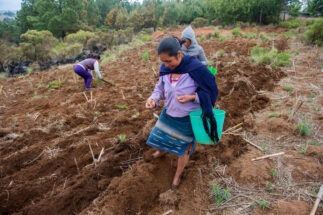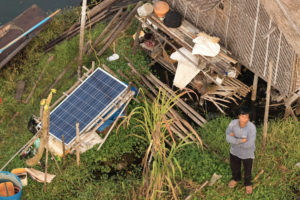Pakistan is rejoicing in its latest achievement on the issue of climate change. The country has been successful in attaining the Sustainable Development Goal Target 13: Climate Action, a decade earlier than the 2030 deadline. Pakistan is ranked fifth among countries most vulnerable to the effects of climate change. Therefore, Pakistan’s achievement on SDG 13 looks like great news on the climate front. But what exactly does achieving SDG 13 mean?
SDG 13, referred to as ‘Climate Action’, urges countries to “take urgent action to combat climate change and its impacts”. The United Nations specifies a range of actions and goals that need to be completed to fulfil SDG 13. A country’s progress on SDG 13 is measured on integrating climate change measures into national policies, strategies and planning. Compliance with SDG 13 also requires countries to adopt and implement national disaster risk reduction strategies in accordance with the UN-specified Sendai Framework for Disaster Risk Reduction 2015-2030.
It is important to recognise that SDG 13 measures a country’s commitment to climate action, in terms of what it sets out in formal governance policies, and not the effect of these policies in terms of measurable outcomes. While the mainstreaming of climate-compatible development in government policy documents is an important milestone, it is only a means to an end, not the end in itself.
Read: Pakistan needs to go beyond tree planting to thrive after Covid-19
Unpacking the indicators that measure Pakistan’s progress on climate action presents a more disconcerting story. A 2017 report by Pakistan’s federal Ministry of Planning, Development and Reforms shows that six of the seven indicators used to compute SDG 13 are global indicators. These global indicators include data, such as the number of countries that adopt national disaster risk reduction strategies; the amount mobilised by developed countries for addressing climate-financing needs of developing countries under the Green Climate Fund; the extent to which climate change funds from developed countries are directed to least-developed countries and small-island developing states.
The only country-specific data that is used to measure progress on goal 13 is the number of deaths and directly affected persons attributed to disasters per 100,000 of the population. SDG 13, thus, seems like a jumble of global climate action indicators, with local disaster-related statistics thrown in as the country-specific indicator.
Read: Pakistan offers nothing to Paris climate summit
Pakistan has surely fulfilled much of its SDG 13 responsibility. The country passed its first ever National Climate Change Policy in 2012 and ratified the Paris Agreement in 2016. The commitment of the current government to the Billion Tree Tsunami programme, Clean and Green Pakistan initiative, Protected Areas Initiative and Ecosystem Restoration Fund are also laudable.
Pakistan’s commitment to climate action was erroneously attributed to the halt of imported coal projects under the China–Pakistan Economic Corridor (CPEC) signed by the previous government and replacing them with new clean energy projects. However, some back-of-the-envelope calculations using the data on CPEC energy projects suggest that out of the 12,488 megawatts (MW) of planned energy projects, 8,220 MW – a staggering 65% – is from coal-based projects. Hydro, wind and solar projects together make up 45% of the total planned MW increased in energy production under CPEC. In 2018, the current Pakistan Tehreek-e-Insaf (PTI) government halted projects based on imported coal. However, some imported coal projects such as the Gwadar coal project were allowed to continue because of their “strategic” importance. Leaving out the Gwadar coal project, more than 96% of the investment in coal is based on local coal sources anyway, thus discrediting the government’s claim to fame for resisting development of coal-based energy.
Read: No end to coal in Pakistan
There surely seems to be a discrepancy in what the Pakistani government is professing as the hallmark of “climate action” and what is happening on the ground. Pakistan’s urban air pollution is among the worst in the world, with reported numbers of pollution indicators much higher than the World Health Organization guidelines. Emissions from vehicular and industrial sources along with waste burning contribute to a worsening environment and climate change. Yes, the country has passed its electrical vehicle policy in an effort to reduce vehicular emissions, but its efficacy in curbing emissions remains to be seen, especially in the face of pushback from the auto industry.
Read: Pakistan says yes to electric bikes and rickshaws, no to cars
Ultimately, it appears that SDG Goal 13 is a rather empty goal, with fluffy indicators that merely point towards a country’s commitment to climate action without any measurable indicators that record actual progress. The achievement of SDG 13 by displaying a formal commitment to climate change will change little on the ground in terms of the lived reality experienced by Pakistan’s citizens. Our people will still be dying of respiratory illnesses produced by an economy that is highly dependent on fossil fuels.
Fazilda Nabeel is a doctoral researcher at the University of Sussex in the UK
![<p>Highly polluting brick kilns are a common sight in Pakistan [Image by: Alamy]</p>](https://dialogue.earth/content/uploads/2020/07/brick-kilns-1-scaled.jpg)







![A woman looks on as children study at the library in the char [image by: Rituparna Neog]](https://dialogue.earth/content/uploads/2020/08/20200701_144645-300x219.jpg)